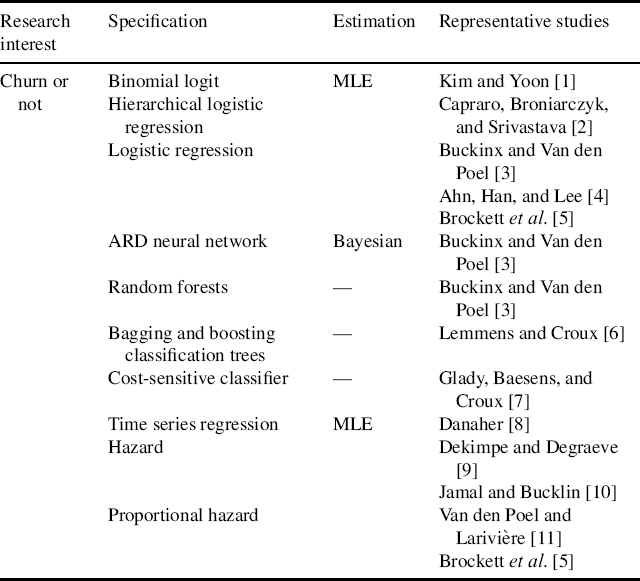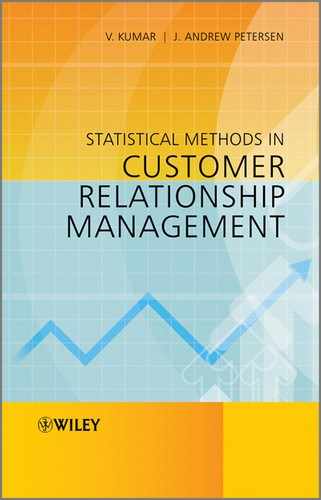6.1 Introduction
In the previous chapters the focus has been on models that help with acquiring the most profitable customers, retaining the most profitable customers, and finally balancing marketing resources across acquisition and retention efforts to maximize profitability. While the ultimate goal of customer retention is to prevent customers from switching merchandisers and stay with the current service provider, there is always going to be customer attrition. And this customer churn can be extremely costly for firms that do not understand when customers are likely to quit the relationship or what warning signals exist that help explain why a customer is likely to quit. For instance, a firm will have to spend significantly more to acquire a new customer than to continue to retain most customers on average. Thus, it becomes financially important to try and get a clear picture of the customer churn process and manage it appropriately.
The most effective way to manage customer churn is to understand the causes or determinants of customer churning behavior, predict which customers are most likely to leave, and conduct promotions or other strategies to encourage them to stay (given that they are likely to be profitable to bring back). For this chapter of the book the focus will be on the following two questions:
- What are the drivers of customer churn?
- Given that a customer has not yet left the firm, when is the customer likely to end the relationship?
In the next chapter we will address the strategies to win the customers back by using promotions or other strategies to encourage the customers to stay. There have been many studies which have been conducted to try and answer the two key questions listed above. Table 6.1 lists the representative studies on customer churn modeling. To provide a comprehensive understanding of how to model customer churn, we will review the issues in the studies one by one along with the related modeling techniques. We will also provide an empirical example at the end of the chapter which will demonstrate how to apply this knowledge to a representative sample of customers from a B2C firm.
Table 6.1 Review of customer churn models.

Similar to customer acquisition and customer retention models, the first question that needs to be answered is whether the firm's customers purchase in a contractual versus non-contractual manner. In most instances this will determine the type of statistical model that needs to be used in order to gain any insights from the data.
6.1.1 Data for Empirical Examples
In this chapter we will be providing a description of the key modeling frameworks that attempt to answer each key research question raised at the beginning of the chapter. We will also be providing an empirical example at the end of the chapter which will show how sample data can be used to answer these key research questions. For the empirical example we provide a dataset titled ‘Customer Churn.’ In this dataset you will find a representative sample of 500 customers and former customers from a typical B2B firm. The data include the following variables:
| Variable | |
| Customer | Customer number (from 1 to 500) |
| Duration | The time in days that the acquired prospect has been or was a customer, right-censored at 730 d |
| Censor | 1 if the customer was still a customer at the end of the observation window, 0 otherwise |
| Avg_Ret_Exp | Average number of dollars spent on marketing efforts to try and retain that customer per month |
| Avg_Ret_Exp_SQ | Square of the average number of dollars spent on marketing efforts to try and retain that customer per month |
| Total_Crossbuy | The total number of categories the customer has purchased from during the customer's lifetime |
| Total_Freq | The total number of purchase occasions the customer had with the firm in the customer's lifetime |
| Total_Freq_SQ | The square of the total number of purchase occasions the customer had with the firm in the customer's lifetime |
| Industry | 1 if the prospect is in the B2B industry, 0 otherwise |
| Revenue | Annual sales revenue of the prospect's firm (in millions of dollars) |
| Employees | Number of employees in the prospect's firm |
These data will be used for the empirical example at the end of the chapter, which will help us to understand the drivers and likelihood of customer churn.
